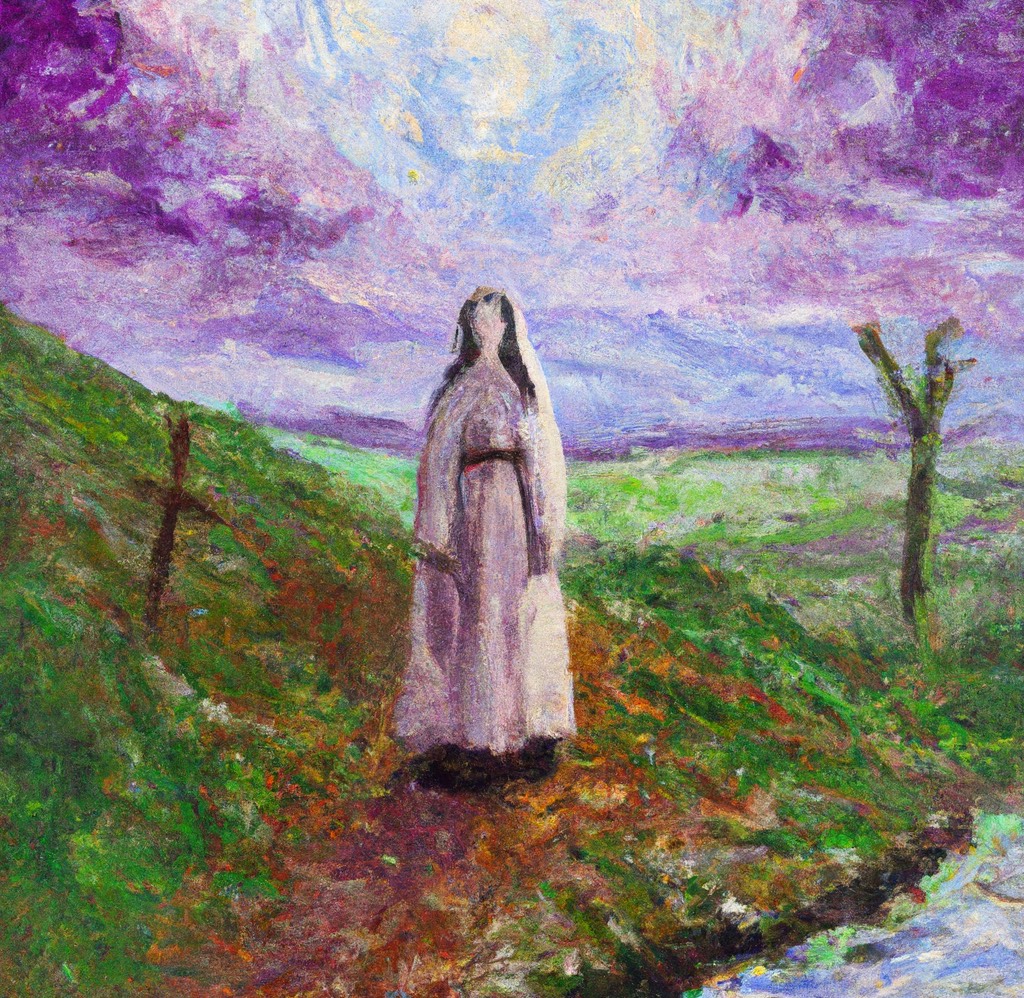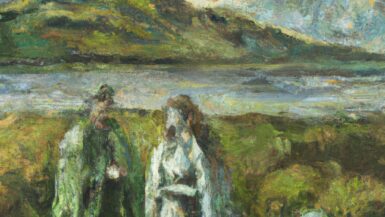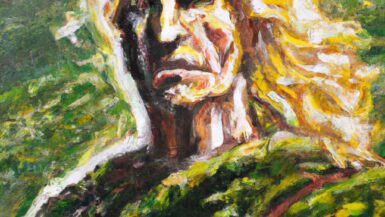Saint Brigid of Kildare, one of Ireland’s patron saints, is a prominent figure in Irish religious history and folklore. Known as the ‘Mary of the Gael,’ her legacy is marked by her dedication to the Christian faith, her founding of several monastic communities, and her legendary miracles. This article provides a thorough exploration of Saint Brigid’s life, her miracles, and her lasting impact on Irish culture and spirituality.
The Life of Saint Brigid
Early Life and Conversion
Born in the mid-5th century, Brigid was the daughter of a pagan chieftain and a Christian slave. Despite her father’s status, Brigid’s early years were marked by hardship. She was known for her piety from a young age, and after converting to Christianity, she dedicated her life to serving God and the poor.
Founding of the Monastery at Kildare
In her early adulthood, Brigid founded a monastic community at Kildare, which became one of Ireland’s most important Christian centres. The monastery was unique for its time, as it housed both monks and nuns in separate establishments under Brigid’s leadership.
Miracles Attributed to Saint Brigid
Saint Brigid is associated with numerous miracles, which demonstrate her piety, compassion, and resourcefulness. These miracles, passed down through generations, cemented her status as one of Ireland’s most revered saints.
The Miracle of the Cloak
One of the most famous miracles attributed to Saint Brigid is the spreading of her cloak over a large area of land. According to the legend, when Brigid asked the King of Leinster for land to build her monastery, he mockingly suggested she could have as much land as her cloak could cover. Miraculously, her cloak expanded to cover a vast tract of land, enough to establish her monastery.
The Healing Miracles
Saint Brigid is also known for performing miraculous healings. Stories speak of her curing the blind, healing lepers, and even bringing the dead back to life. These miracles often highlight her compassion for the sick and needy.
The Miracle of the Ale
In another miracle, Brigid is said to have turned water into beer for a visiting clergyman and his companions. This story reflects both her hospitality and her divine abilities.
The Legacy of Saint Brigid
The Cult of Saint Brigid
After her death in 525 AD, a strong cult developed around Saint Brigid. Her monastery in Kildare became a major centre of pilgrimage. Her feast day, the 1st of February, is celebrated with various customs, including the making of Saint Brigid’s crosses from rushes.
Saint Brigid in Literature
Saint Brigid’s life and miracles have been the subject of several hagiographies, including the 7th-century ‘Life of Brigid’ by Saint Broccán Clóen. Her story also appears in various works of Irish literature, reflecting her enduring influence.
Saint Brigid in Modern Ireland
Today, Saint Brigid remains a potent symbol of Irish identity and spirituality. She is the patron saint of several professions and places, and schools, churches, and roads across Ireland bear her name. The Saint Brigid’s cross, a distinctive four-armed cross made from reeds, is a common sight in many Irish homes, serving as a symbol of protection and a reminder of Saint Brigid’s legacy.
Saint Brigid in Comparative Religion
Pre-Christian Goddess Brigid
Interestingly, Saint Brigid shares her name with a pre-Christian Irish goddess associated with healing, poetry, and smithcraft. This has led to speculation about the convergence of Christian and pagan traditions in early Irish Christianity. Some believe the saint’s attributes may have been influenced by those of the goddess, or that the cult of the goddess was replaced by the cult of the saint.
Saint Brigid and Saint Patrick
Saint Brigid is often associated with Saint Patrick, another patron saint of Ireland. While Saint Patrick is more widely recognized outside of Ireland, within the country itself, Saint Brigid’s influence is equally significant. Both saints have contributed to the distinctive character of Irish Christianity, with Saint Patrick representing the missionary and evangelizing aspect, and Saint Brigid embodying the nurturing and monastic tradition.
The Global Influence of Saint Brigid
Saint Brigid Beyond Ireland
The veneration of Saint Brigid extends far beyond the borders of Ireland. Irish missionaries and immigrants have carried her cult to various parts of the world. Today, Saint Brigid is honored in places as diverse as Australia, New Zealand, the United Kingdom, Canada, and the United States. Her feast day is celebrated by Irish diaspora communities worldwide.
Saint Brigid in Art and Iconography
Saint Brigid has been a popular subject in Christian art and iconography. She is often depicted holding a reed cross, a crozier, or a lamp—symbols associated with her life and miracles. In recent years, she has also become a symbol of female empowerment and is often depicted in feminist and social justice-oriented art.
Relevance of Saint Brigid Today
Spiritual Inspiration
In a world grappling with issues of poverty, inequality, and environmental degradation, Saint Brigid’s legacy of charity, leadership, and respect for nature provides a source of spiritual inspiration. Her life’s work embodies many of the values championed by contemporary social and environmental movements.
Ecumenical Symbol
In an increasingly pluralistic and diverse Ireland, Saint Brigid also serves as a symbol of unity. As a figure revered by various Christian denominations and linked to pre-Christian Irish tradition, she embodies the potential for common ground and mutual respect among different faith traditions.
In conclusion, the story of Saint Brigid, Ireland’s beloved patroness, is one of enduring faith, compassion, and resilience. From her legendary miracles to her profound impact on Irish culture and spirituality, her legacy continues to inspire and guide not only the Irish people but also those around the world.






Leave a reply